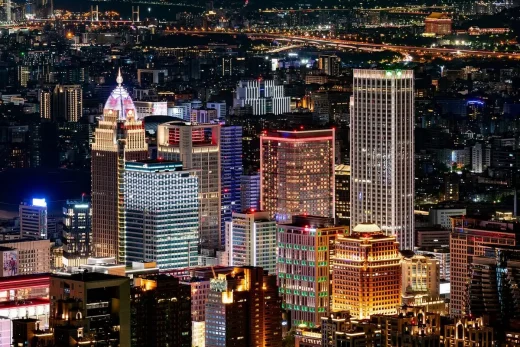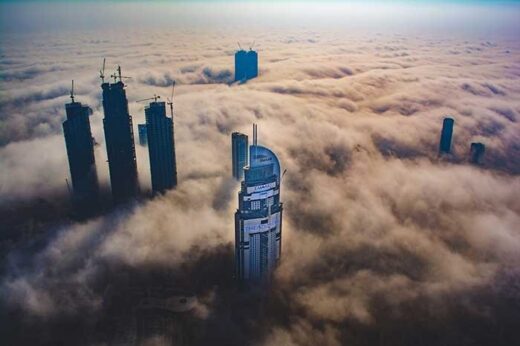Skyscraper design art and science, High-rise building construction, World’s tallest towers
Skyscraper Design Art and Science
August 23, 2024
Reaching for the Sky: The Art and Science Behind Skyscraper Design
Skyscrapers are more than just tall buildings. They represent the pinnacle of human ingenuity and ambition. These towering giants shape our city skylines, standing as symbols of progress, innovation, and economic prowess. But what goes into designing these architectural marvels? In this blog post, we’ll explore the intricate process behind skyscraper design, from historical milestones to modern innovations, and highlight some iconic examples that have set new benchmarks in the world of architecture.
The Historical Evolution of Skyscrapers
Early Beginnings and Key Milestones
The concept of skyscrapers emerged in the late 19th century, primarily in the United States. The Home Insurance Building in Chicago, completed in 1885, is often considered the world’s first skyscraper. Standing at 138 feet, it was revolutionary for its use of a steel frame structure, which allowed buildings to reach unprecedented heights.
The Rise of Skyscrapers in the 20th Century
The 20th century saw a rapid evolution in skyscraper design. The Chrysler Building and the Empire State Building, both in New York City, became icons of Art Deco architecture in the 1930s. These buildings not only pushed the boundaries of height but also incorporated ornate details and luxurious materials, making them symbols of opulence and modernity.
Contemporary Milestones
In recent decades, skyscrapers have reached new heights and levels of complexity. The Burj Khalifa in Dubai, completed in 2010, stands at an astonishing 828 meters, making it the tallest building in the world. This milestone was achieved through advanced engineering techniques and materials that could withstand the immense stress and environmental conditions at such heights.
Design Considerations for Skyscrapers
Structural Engineering
At the core of any skyscraper is its structural engineering. Engineers must ensure that the building can withstand various forces, including wind, earthquakes, and the building’s own weight. Advanced computer simulations and wind tunnel tests are often used to optimize the design and ensure stability.
Materials
The choice of materials is crucial in skyscraper design. Steel and reinforced concrete are the primary materials used due to their strength and durability. However, modern skyscrapers often incorporate innovative materials like carbon fiber and high-performance glass, which offer additional benefits such as reduced weight and improved energy efficiency.
Environmental Impact
Sustainability is becoming increasingly important in skyscraper design. Architects and engineers are now focusing on creating buildings that are not only functional but also environmentally friendly. This includes the use of energy-efficient systems, green roofs, and sustainable materials. The aim is to reduce the carbon footprint and create buildings that contribute positively to the urban environment.
Case Studies of Iconic Skyscrapers
The Shard, London
The Shard, completed in 2012, is one of London’s most iconic landmarks. Designed by architect Renzo Piano, it stands at 310 meters and features a unique glass facade that reflects the sky and changes appearance with the weather. The building incorporates energy-efficient systems and a triple-skin facade that reduces heat gain and loss.
One World Trade Center, New York
Rising from the ashes of the original World Trade Center, One World Trade Center is a symbol of resilience and renewal. Completed in 2013, it stands at 541 meters and features a design that incorporates advanced safety measures, including a reinforced concrete core and upgraded fireproofing.
Taipei 101, Taiwan
Taipei 101 was the world’s tallest building from 2004 until 2010. Its design is inspired by traditional Chinese pagodas, and it incorporates a massive tuned mass damper to counteract the effects of typhoons and earthquakes. This innovative feature has set a new standard for skyscraper design in earthquake-prone regions.
Future Trends in Skyscraper Design
Sustainable Practices
Sustainability will continue to play a significant role in the future of skyscraper design. Architects are increasingly incorporating renewable energy sources, such as solar panels and wind turbines, into their designs. Green building certifications like LEED are becoming the norm, pushing the industry towards more eco-friendly practices.
Smart Building Technologies
The integration of smart technologies is another trend shaping the future of skyscrapers. These technologies include sensors that monitor air quality, temperature, and energy usage, allowing for more efficient building management. Smart elevators that reduce wait times and energy consumption are also becoming more common.
Mixed-Use Developments
Modern skyscrapers are often designed as mixed-use developments, combining residential, commercial, and recreational spaces within a single building. This approach not only maximizes space but also creates vibrant, self-sustaining communities that enhance the urban experience.
Skyscraper design art and science – Final Thoughts
Skyscrapers are more than just feats of engineering; they are symbols of human achievement and aspirations. From their historical beginnings to the cutting-edge designs of today, these towering structures continue to push the boundaries of what is possible. As we look to the future, sustainable practices and smart technologies will play a crucial role in shaping the next generation of skyscrapers.
Designing skyscrapers is no easy feat, requiring a blend of art, science, and meticulous planning. But with the right expertise and innovative thinking, these giants of the skyline will continue to inspire and awe for generations to come. With a little help from companies that work with buildings like this, such as Corona Craft Restorations, they are sure to stand for years to come. If you’re interested in learning more about the intricacies of skyscraper design or need expert advice, don’t hesitate to reach out to the professionals at Corona Craft Restorations, who specialize in repairs for such buildings.
Image Credit: Wikimedia Commons and Unsplash
Comments on this guide to Skyscraper design art and science – tallest towers under construction around the world article are welcome.
Skyscraper Buildings
Skyscraper Building Posts
7 Tallest skyscrapers under construction
Architects and Architecture
Architects and Architecture by Type – architectural selection below:
Comments / photos for the Skyscraper design art and science page welcome.








